It was the 1st of May, a beautiful day and Denise wasn’t playing golf. I had looked for car-boot/antique sales, as we continue to search for unique items for our future home. But I came up short. Instead, I found a town with a Rococo palace, gardens, and a Roman ruin. Estoi might be an interesting excursion.
Another Holiday
If you hop on the toll road, Estoi is a 40-minute drive from VRSA. North of Olhão and just a bit east of Faro; we exited the highway and followed IP1 to Estoi. Just outside of town we saw a billboard for their annual festival…just our luck it was scheduled for the next day1. Given I was still in my post-surgery shoe at the time (which I am pleased to report is no longer required), I had mapped our route before leaving the house. Our plan was to park near the ruins, check them out, and then hoof it into town. We would take in the palace and gardens and perhaps have a bit of brunch before walking back.
We have been in Portugal for 17 months now…so I should know better! Of course, 1 May is an official holiday in Portugal! The ruins were closed. Now why, you may ask, is the 1st of May an official Portuguese holiday. There are actually two very different reasons to celebrate Primeiro de Maio:
Dia do Trabalhador (Workers’ Day) - is roughly the equivalent of Labor Day in the States. However, it has a slightly different bent in that organized demonstrations against working conditions were repressed during the Salazar/Caetano regimes.
Start of Spring - and a time “for protecting homes from evil for the year ahead”.
Maias
We left the gated ruined Roman Villa of Milreu in search of a palace. Along the way, we found houses with what I would describe as slender palm fronds on either side of the door. Later, when doing research for this post, I learned that they were maias: “an autochthonous species with the scientific name Cytisus striatus, became known, in English, as Portuguese Broom.” This must be part of the “protecting the home” custom I had read about.
We also passed adorable, life-size dolls propped on doorsteps and on balconies. It turns out that “maia” is the term used to describe straw-filled dolls…scarecrows without the stick up their back. At first, we saw a single doll on a doorstep.
It had a comical sign … perhaps because we could not understand the full meaning. For example, we read the one above to say:
Viva May, Viva May
With a little luck
I try to get up, but I fall down
I can't go to collect the pinecones
Pinecones in May? Clearly, we are missing something in the translation. Native Portuguese speakers … please help us out!
Others offered social commentary. The sign on the woman above said:
It's been 2 years since I've worked
Because of the pandemic
I signed up for Big Brother
To get some company
While others offered political commentary, including:
48 years since the 25th of April passed
Our life is like this
Who would say
That our old age would have
Only a park bench
In May we had elections
In the village there is no joy
No decisions are made
To improve the parish
Of Course, There are Churches
During our visit to Estoi, we visited two lovely churches. We also went into the hotel lobby of the Pousada Palácio Estói, which is built within the rococo palace pictured at the top of this post. I had hoped they might have a public restaurant but found it was only available for guests.
We happened upon a street that for a moment made us think we were in Lisbon.
Observed manicured gardens.
And less manicured ones with ancient gates in the distance.
So, no, this day did not go exactly as planned … but isn’t that part of the adventure?
We learned from a shop owner that on 2 May men in the village would descend on Olhão to drink beer. At 21:00ish they would get on horseback, carrying lit torches, and ride to Estoi. (Seems like a sensible thing to do after drinking all day.) They would arrive at the church at about 22:00 and sing and dance around a bonfire. The party goes on well into the night. (Don’t these people know we are in bed by ten.) There is a historical significance to this event. It celebrates the treacherous journey on horseback that men would make to deliver goods to Alentejo.

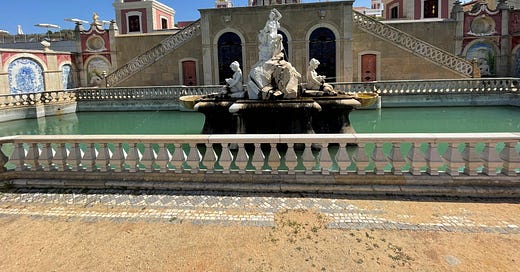



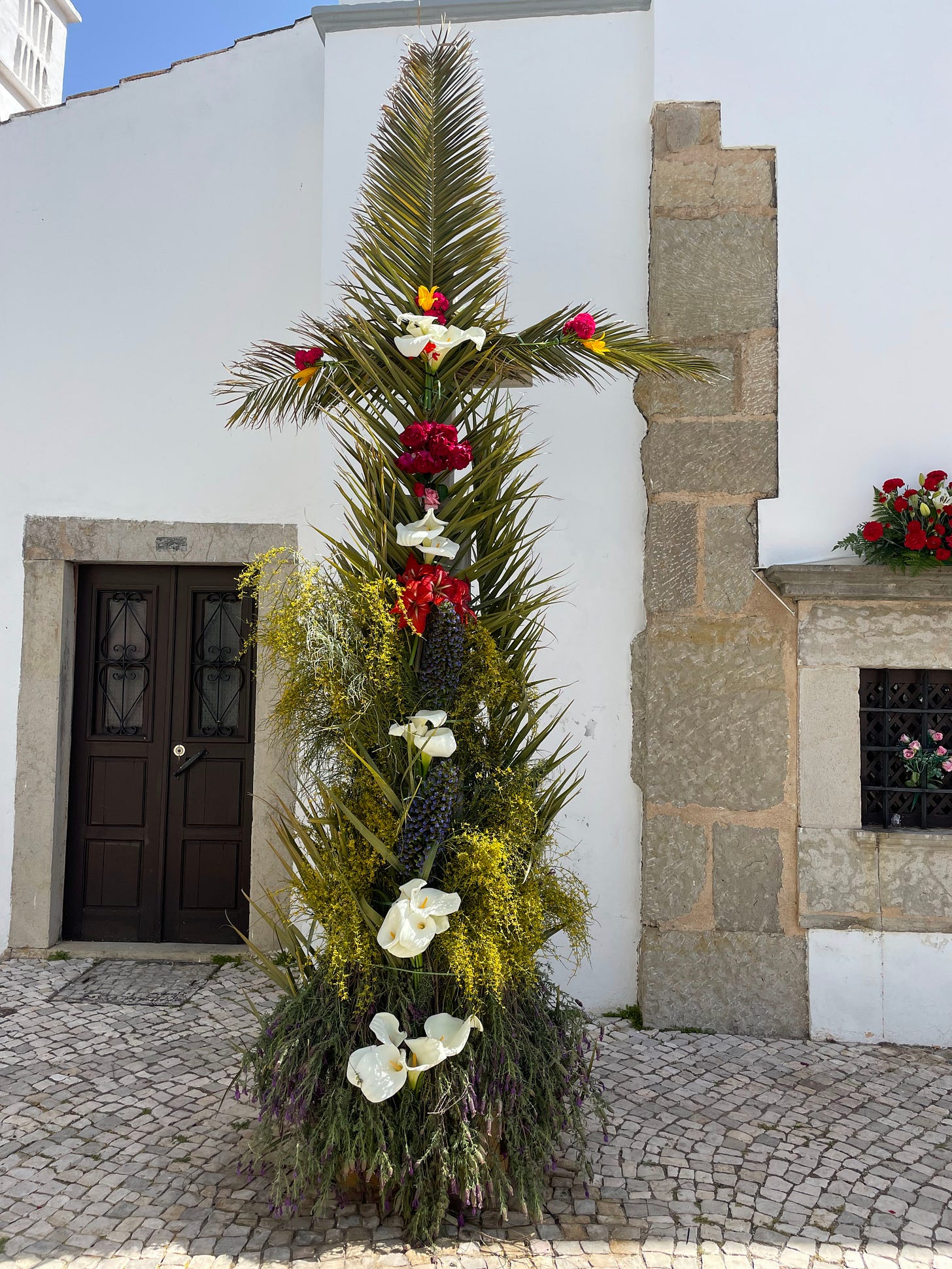
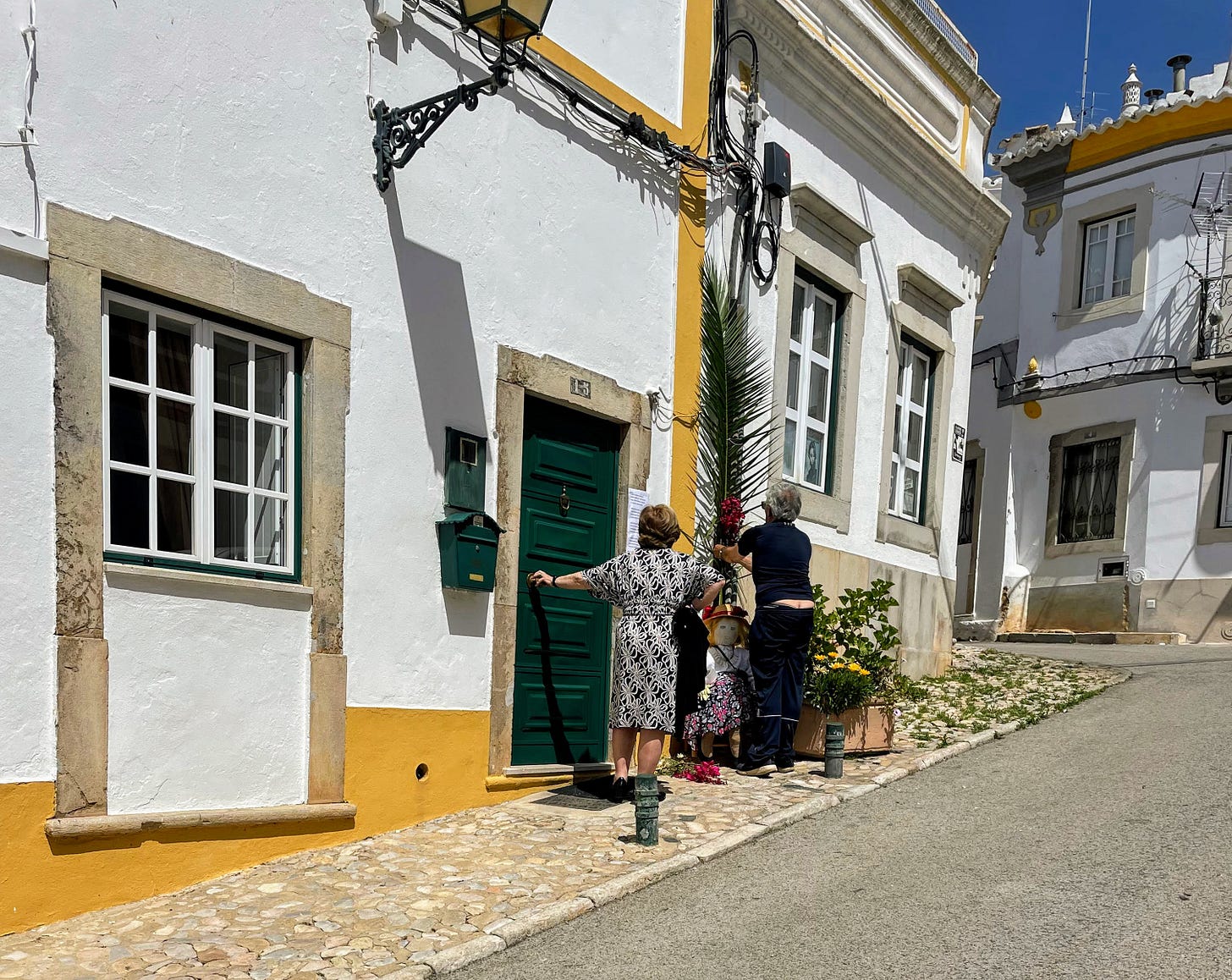

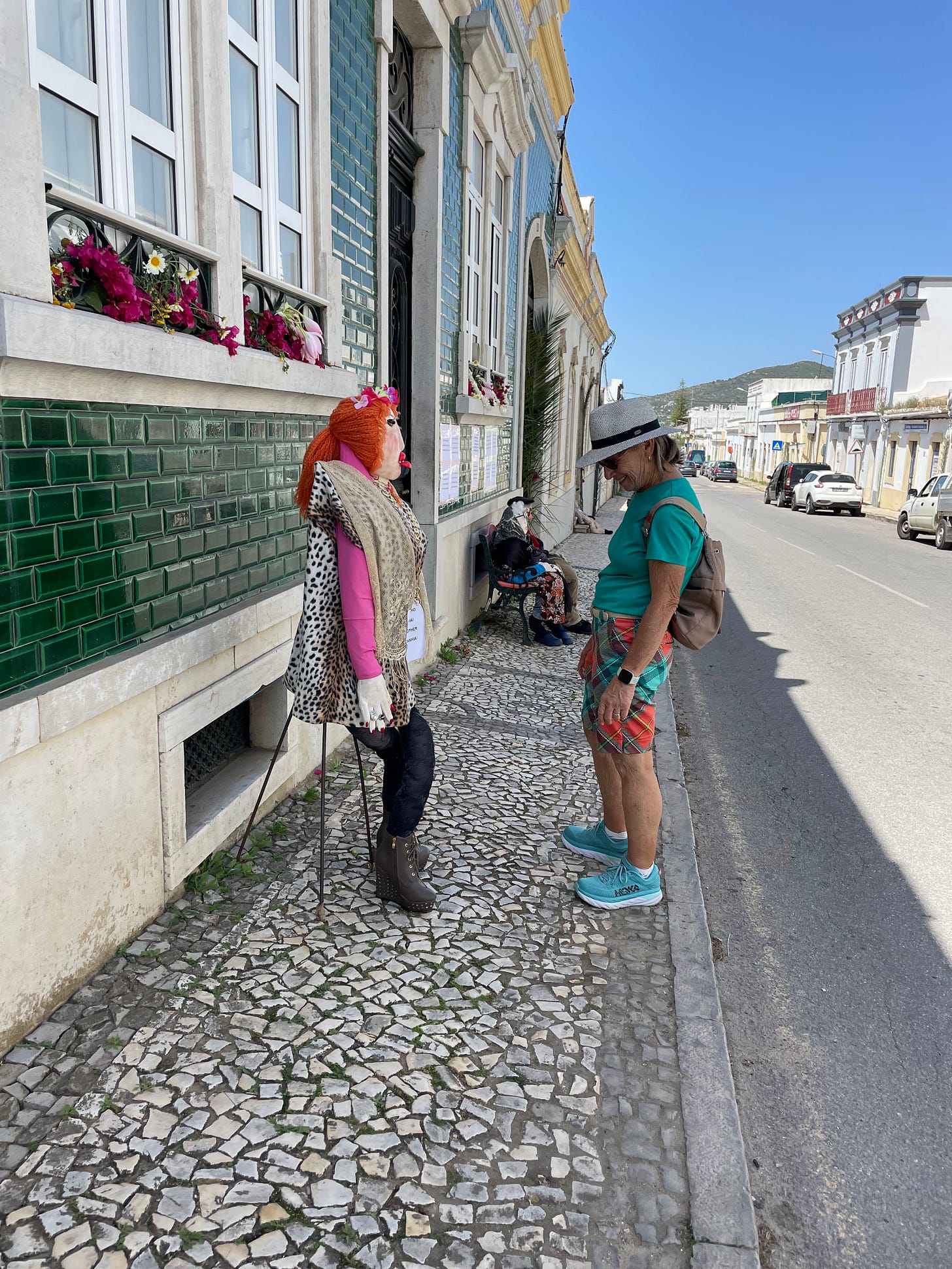

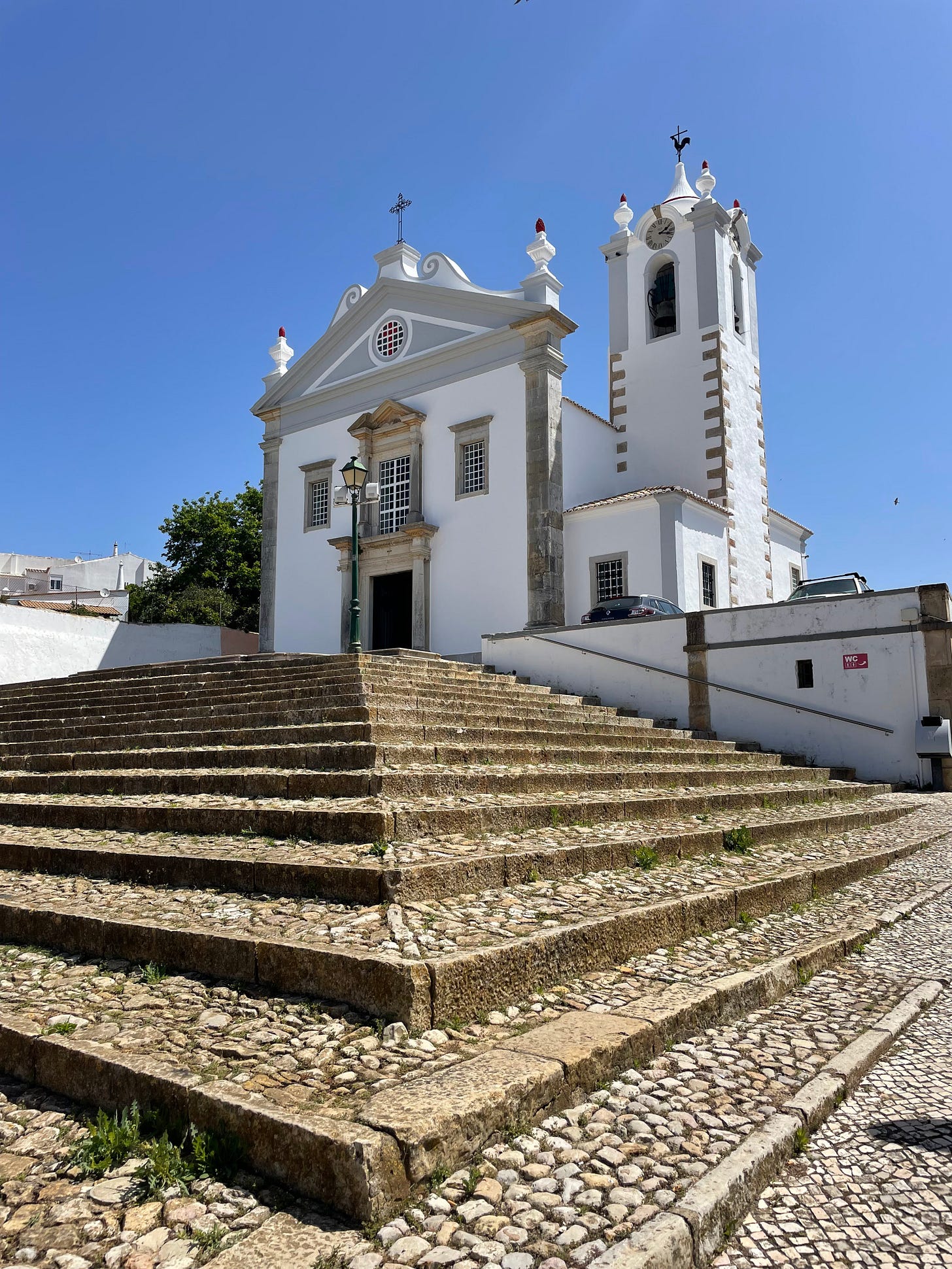
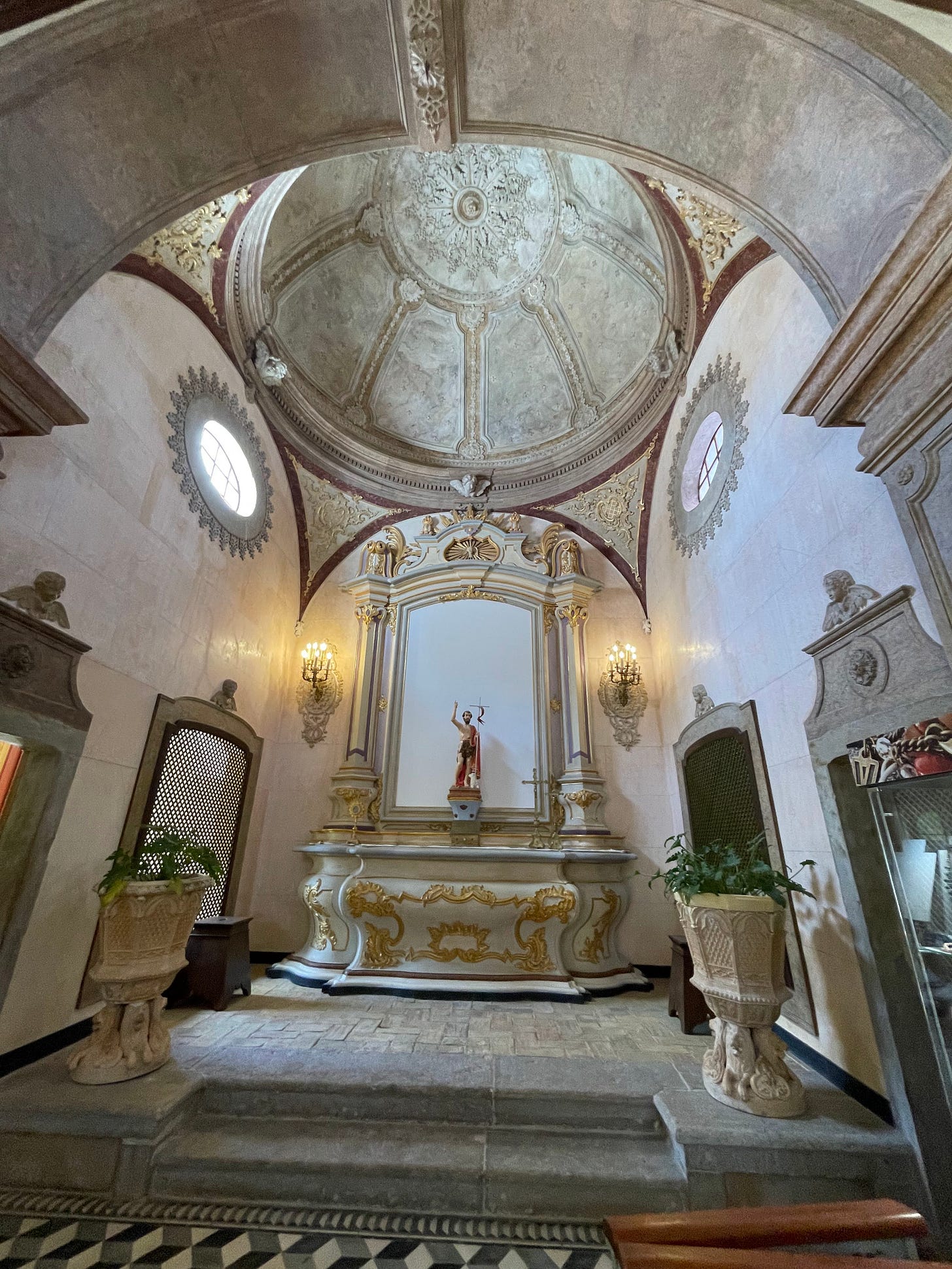
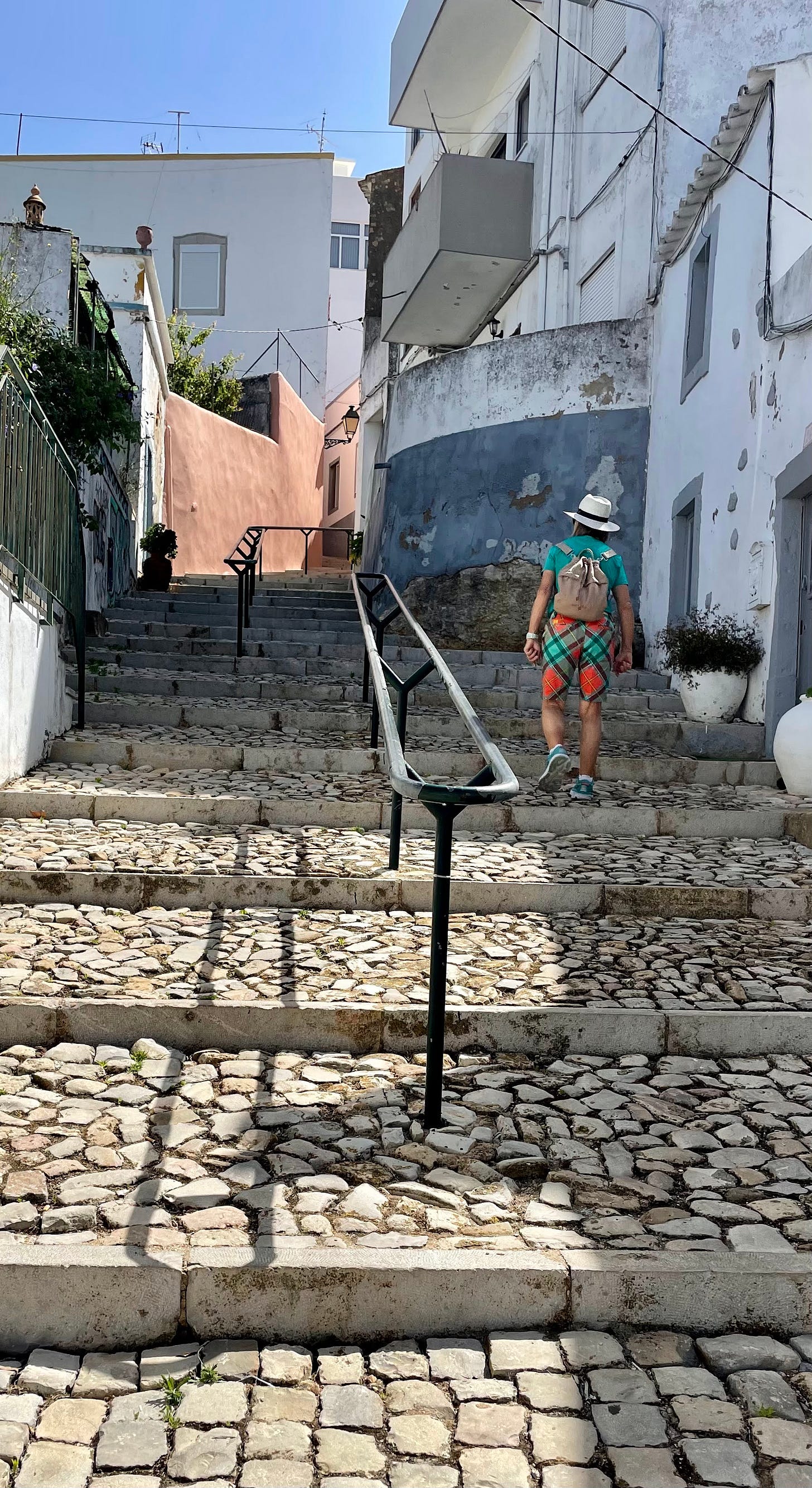
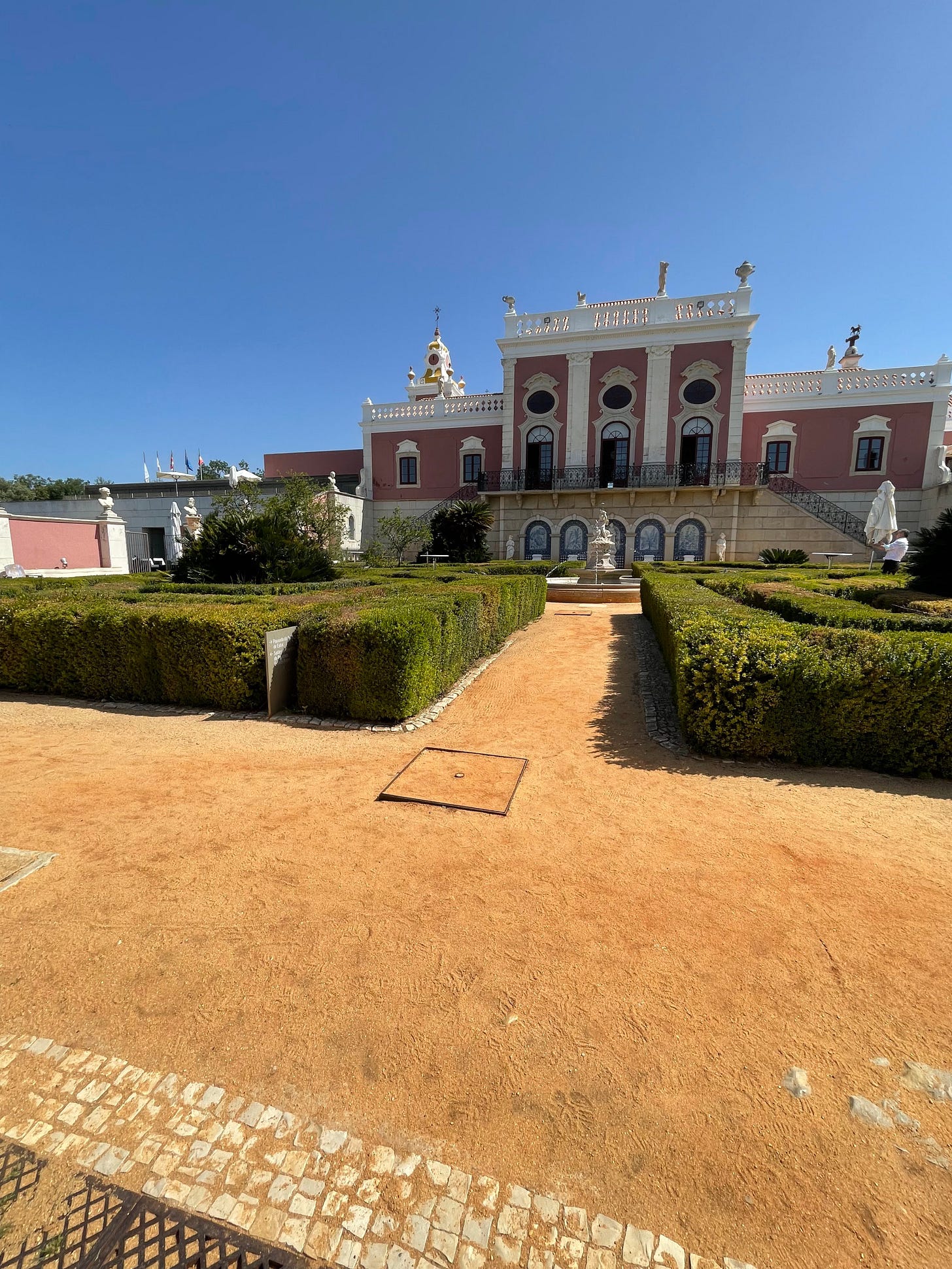

I love the maia's both in palm frond and in scarecrow form. What a lovely tradition. The signs are great describing both the past and present. As always, your photography is eye candy.
Very interesting. I like the fact that everything is so old. Makes me feel better.